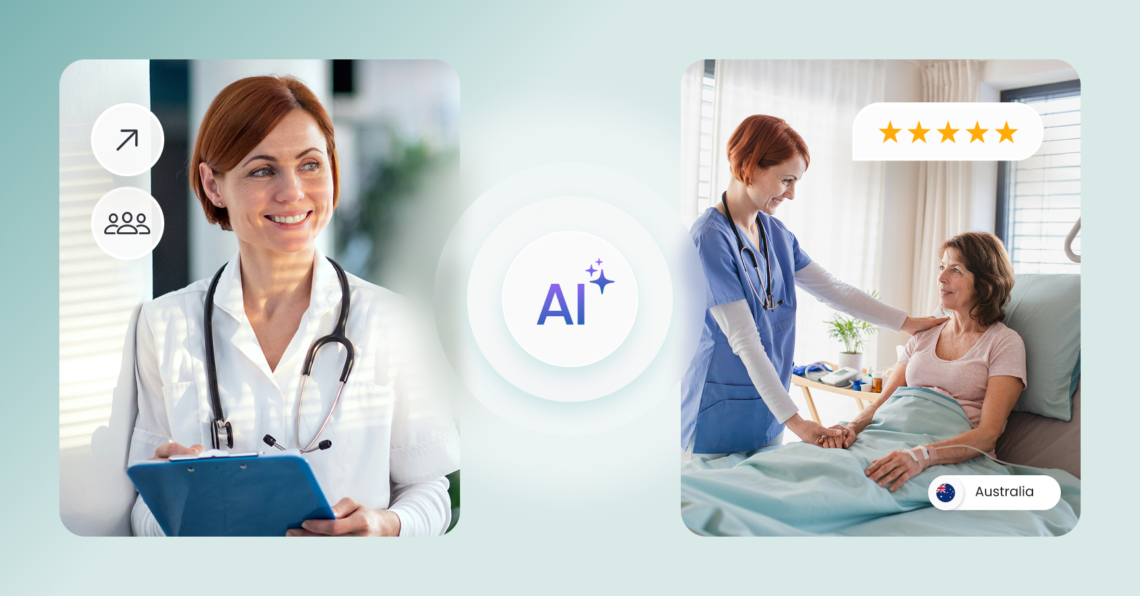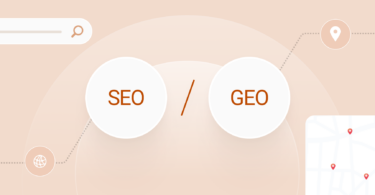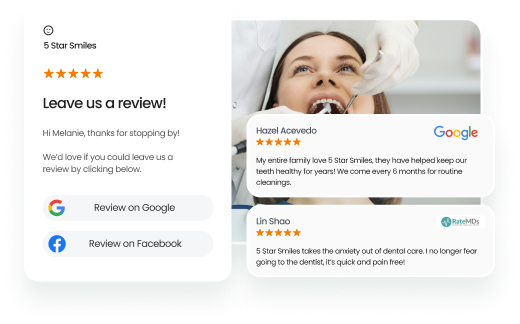AI in healthcare in Australia is rapidly transforming how care is delivered, managed, and experienced. From AI-powered melanoma detection to smarter triage systems in emergency rooms, healthcare providers in Australia are using AI to improve clinical accuracy, streamline operations, and offer faster, more personalized support.
But what does this mean for everyday patient care? Take a local company, such as a dental clinic. Without AI, appointment booking and patient follow-ups can be slow, manual, and exhausting. With AI tools like Birdeye Chatbot AI, those same tasks are handled instantly, freeing up staff and improving the patient experience.
Meanwhile, digital visibility is becoming important in healthcare. As noted in the State of Google Business Profile 2025, 86% of all profile views in healthcare come from category-based searches, like “dentist near me” or “urgent care Sydney.” Clinics using AI-driven tools such as Birdeye Listings AI not only improve operational efficiency but also show up when patients need them most.
AI is clearly here to stay, but understanding how it fits into clinical practice, digital strategy, and patient trust is critical. In this blog, we explore the full picture: the benefits, challenges, ethical considerations, and how healthcare providers across Australia are using tools like Birdeye to navigate this transformation.
Table of contents
- Understanding the evolution of AI in Australian healthcare
- What the AVA-AI study revealed about public trust in AI-enabled health services
- Which attributes of AI tools matter most to Australian patients and clinicians?
- The real benefits of artificial intelligence in clinical practice
- Challenges and ethical concerns of AI in healthcare: What must be addressed
- How AI tools are regulated in Australia’s healthcare system
- How healthcare providers can meet their professional obligations
- What the future holds for AI-enabled healthcare in Australia
- FAQs: AI in healthcare Australia
- Final thoughts: Moving from potential to practice
Understanding the evolution of AI in Australian healthcare
AI in healthcare has matured from a promising research concept to a foundational layer within the country’s health infrastructure. This transformation has been shaped by years of experimentation, growing demand for smarter clinical tools, and increasing support from peak bodies and policymakers. But it didn’t happen overnight. The journey has been gradual and strategic.
Since the early 2010s, Australia has steadily advanced AI in healthcare, from pilot projects in radiology and predictive analytics to full-scale clinical support tools. Hospitals in Sydney, Melbourne, and Brisbane first proved AI could detect abnormalities and predict risks faster than manual review.
By 2020–2022, adoption expanded into chronic disease monitoring, personalized treatments, and electronic health record integration, with AI even aiding ICU triage during the pandemic.
From 2023 onwards, however, regulatory and ethical scrutiny intensified, with bodies like Australian Alliance for Artificial Intelligence in Healthcare (AAAiH), TGA, and AHPRA setting national guidelines to ensure responsible use, data privacy, and human oversight in AI-powered care.
Quick Tip: Any AI used in healthcare marketing must now meet rigorous safety, explainability, and fairness benchmarks, especially when it involves direct influence over treatment plans or outcomes.
Rapid mainstream adoption (2024–2025): Scaling across sectors
The current phase is defined by scale. A recent report notes an increase in AI deployments across public and private hospitals, aged care, mental health services, and outpatient clinics. The push is supported by new funding initiatives for digital transformation and workforce training.
AI in healthcare has evolved from hospital-based pilot projects to widespread adoption across the entire healthcare system.
With stronger safeguards around data privacy, ethics, and oversight from bodies like AAAiH, AI now plays a critical role in improving treatment plans, diagnostics, and operational efficiency, especially in aged care and outpatient settings.
Importantly, the benefits of AI are reaching solo clinics and primary care. For example:
- A single-location physiotherapy clinic in Lakelands used Birdeye to collect 813 patient responses over 17 months.
- Identified 519 promoters using location-specific NPS data.
- Addressed feedback and service gaps based on detailed response analysis.
- Leveraged Birdeye Chatbot AI to automate patient interactions.
- Used Birdeye Listings AI to ensure accurate online presence and boost local visibility.
- Engaged patients in real time with Birdeye Messaging AI, improving responsiveness and care quality.

Learn more about Birdeye and the physiotherapy practice case study
AI is no longer a siloed innovation for hospitals. It’s now part of how Australia delivers quality care, manages public health, and ensures patient safety across sectors, regions, and specialties. The evolution of AI in Australian healthcare reflects a strategic blend of research, real-world validation, ethical oversight, and practical adoption, all grounded in the core mission: to improve the lives of patients.
What the AVA-AI study revealed about public trust in AI-enabled health services
The Australian Values and Attitudes on Artificial Intelligence (AVA-AI) study provides one of the most comprehensive snapshots of how Australians perceive the use of AI in healthcare and related services.
The study went beyond surface-level sentiment and examined how public support shifts when AI is applied in specific healthcare contexts.
What Australians really think: Key takeaways from the AVA-AI study
General support for AI in healthcare is strong, especially when it’s used to assist clinicians, improve efficiency, or reduce administrative burden.
However, support drops significantly in high-stakes scenarios, including:
- Fully autonomous surgeries
- AI systems are making triage or treatment decisions without clinician involvement
When asked to rank what mattered most, respondents consistently prioritized
- Patient safety
- Accuracy of diagnosis or recommendation
- Informed consent and transparency over speed or cost-efficiency
AI in social services (e.g., welfare or eligibility assessments) received noticeably less support than clinical applications, indicating a preference for human decision-making in emotionally or socially complex situations.
Respondents highlighted several ethical issues as non-negotiable for any AI system in healthcare:
- Explainable AI with clear, understandable reasoning.
- Fairness across patient populations (i.e., avoiding biased outcomes).
- Strong human accountability when something goes wrong.
- Assurance of data privacy and secure handling of medical information.
Pro Tip: Want to improve AI adoption in your clinic or practice? Start by educating patients and staff on how your AI tools work and making it clear that AI is there to support, not replace your team’s clinical judgment. This transparency builds trust, primarily when supported by ethical design and real-world success stories.
Which attributes of AI tools matter most to Australian patients and clinicians?
As the adoption of AI in healthcare in Australia accelerates, one thing is clear: successful implementation doesn’t just depend on the technology; it depends on trust. For AI tools to be accepted and effectively integrated into clinical settings, they must align with the expectations and priorities of both patients and healthcare professionals.
Attributes patients and clinicians care about most:
- Accuracy of diagnosis and recommendations: Ranked the highest priority by both patients and doctors. AI must enhance clinical judgment, not produce generic or unverified outputs.
- Transparency and explainability: It’s not enough for an algorithm to work; it must also be able to explain how it reached its conclusion in language both clinicians and patients can understand.
- Informed consent: Patients want to know if AI is involved in their care, especially during diagnosis or treatment planning. Consent must be proactive, not assumed.
- Data privacy and health record security: Confidence in AI is deeply linked to how securely medical data is handled. Tools must comply with Australia’s privacy regulations and health data governance standards.
- Professional accountability: Across all use cases, patients expect that human clinicians make final decisions. AI should support care, not take control of it.
Quick Tip: Tools like Birdeye Reviews AI help practices build transparency and trust by summarizing patient sentiment, highlighting recurring concerns, and ensuring customer feedback is addressed promptly, reinforcing the message that technology is being used to improve care, not replace it.
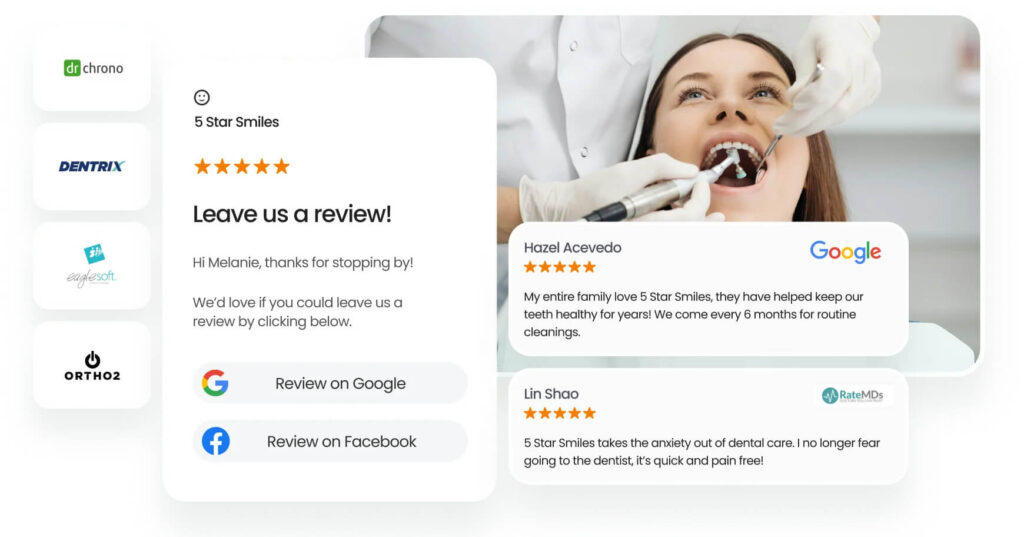
The real benefits of artificial intelligence in clinical practice
From early diagnosis to administrative optimization, AI is helping the country’s healthcare system improve quality, expand access, and scale sustainably without compromising the human touch. As clinicians face growing demand and resource pressures, AI tools are providing the support they need to focus on what matters most: better outcomes and patient care.
1. Enhanced diagnostic precision
AI is reshaping how diagnosis happens, especially in specialties where speed and accuracy are critical.
- Machine learning algorithms are detecting early-stage cancers from X-rays and MRIs, often identifying subtle patterns missed by the human eye.
- In ophthalmology, AI-assisted retinal scans are being used for monitoring diabetic eye disease, reducing wait times, and improving detection rates in remote areas of Australia.
Example: In regional clinics, AI tools are assisting radiologists in interpreting thousands of scans each month, improving consistency and reducing diagnostic risks.
2. Better patient engagement and communication
AI doesn’t just work in the background; it’s transforming how patients and clinicians interact.
- Birdeye Messaging AI offers secure, 24/7 communication across SMS, email, and webchat, helping practices stay responsive, even outside office hours.
- With GenAI-powered responses, patients receive instant answers to routine queries, increasing patient satisfaction and reducing no-shows.
Let’s hear from Adam Thorne, CEO, Harley Street Dental Studio:
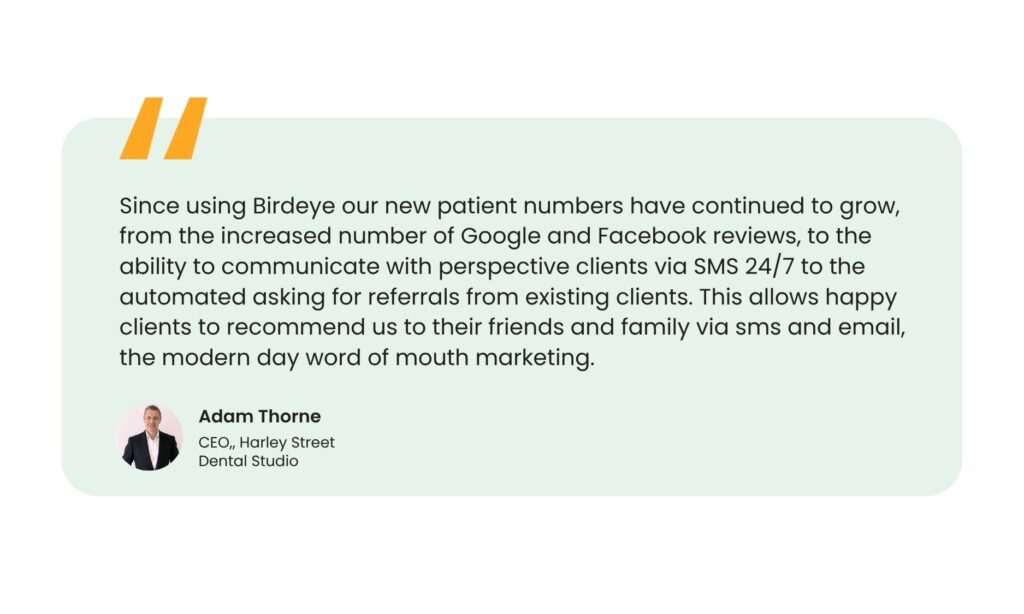
Worth Noting: In a country as geographically dispersed as Australia, round-the-clock communication is essential for improving access and care continuity, especially in rural communities
3. Improved efficiency in administrative tasks
The burden of non-clinical tasks, scheduling, follow-ups, and claims processing has long impacted the workforce. AI helps reclaim valuable time.
1. Birdeye Chatbot AI manages incoming queries and routes patients to the right department or location.
2. It can handle multiple conversations simultaneously, allowing front-desk teams to focus on more complex patient needs.
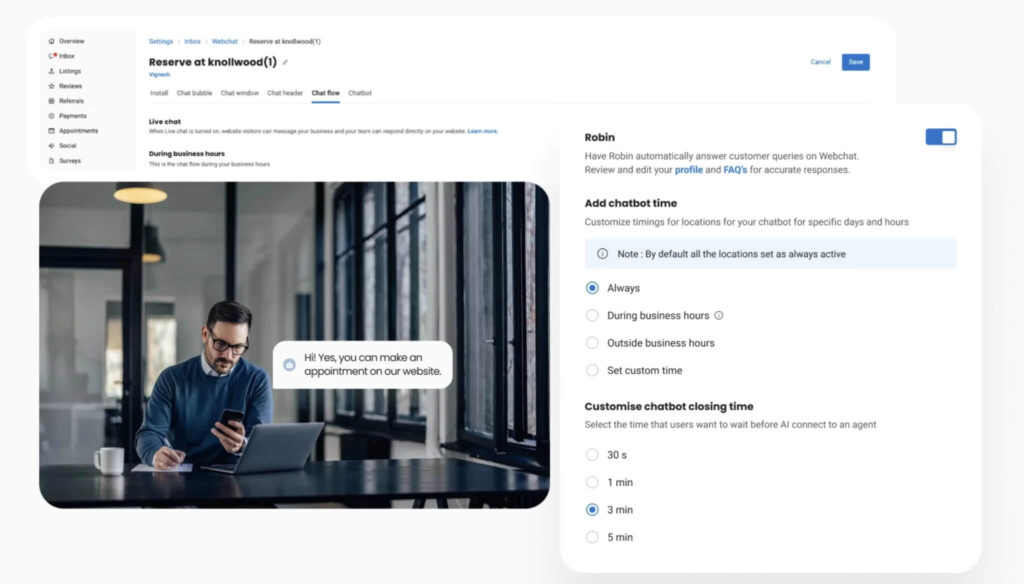
Focusing on automation doesn’t mean replacing staff; it’s about reducing repetitive workloads and improving the overall patient experience.
4. Personalised treatment planning
AI enhances clinical decision-making by analyzing vast amounts of medical data to inform highly tailored treatment approaches.
- Based on patient history, behavior patterns, and comorbidities, AI tools recommend optimized treatment plans that support both intervention and prevention.
- This enables clinicians to practice more proactive, data-backed medicine, especially for chronic conditions like diabetes, heart disease, and asthma.
Quick Tip: AI-powered analysis doesn’t just save time, it reduces errors and improves the consistency of care across teams and locations.
5. Boosted local visibility and practice growth
Birdeye Listings AI improves local SEO performance and ensures accurate online presence across Google and healthcare directories. Did you know? MC Dental Brighton saw a 304% increase in website visits and 233% increase in calls after using Birdeye to optimize their listings and healthcare reviews. Let’s dive into more details of this success story-
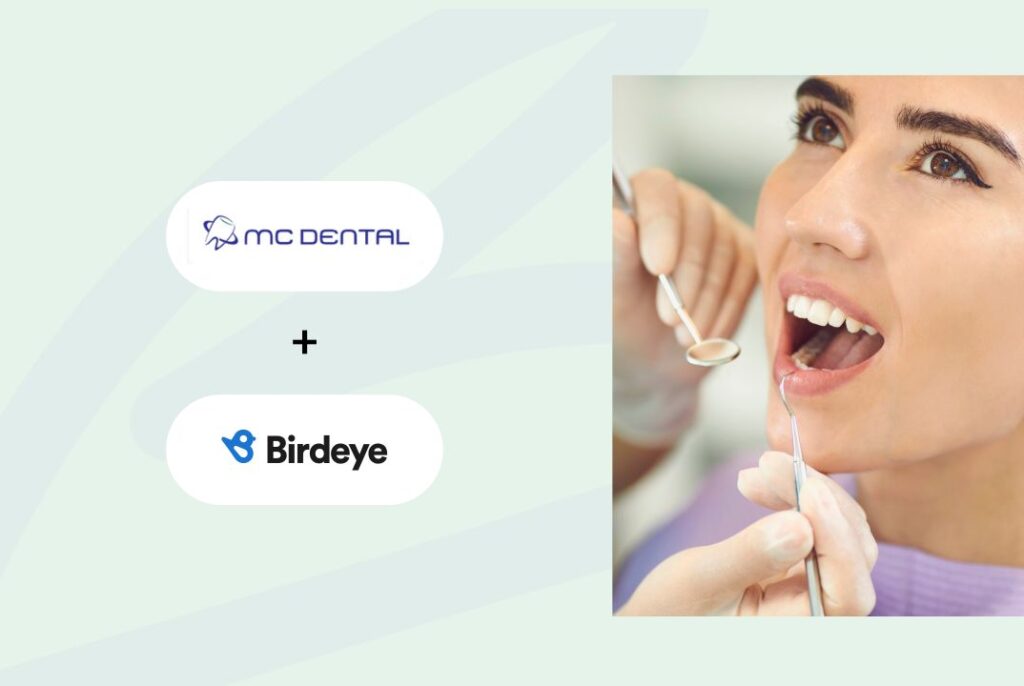
The brand: MC Dental Brighton offers personalised and professional care. They ensure every patient receives compassionate treatment.
The challenge: Limited visibility, stagnant reviews, and low website traffic.
The solution: With Birdeye Listings AI, Birdeye Reviews AI, Inbox, and Birdeye Social AI tools, they experienced:
- 99 new reviews
- 146% increase in discovery searches
- 168% rise in Google profile views
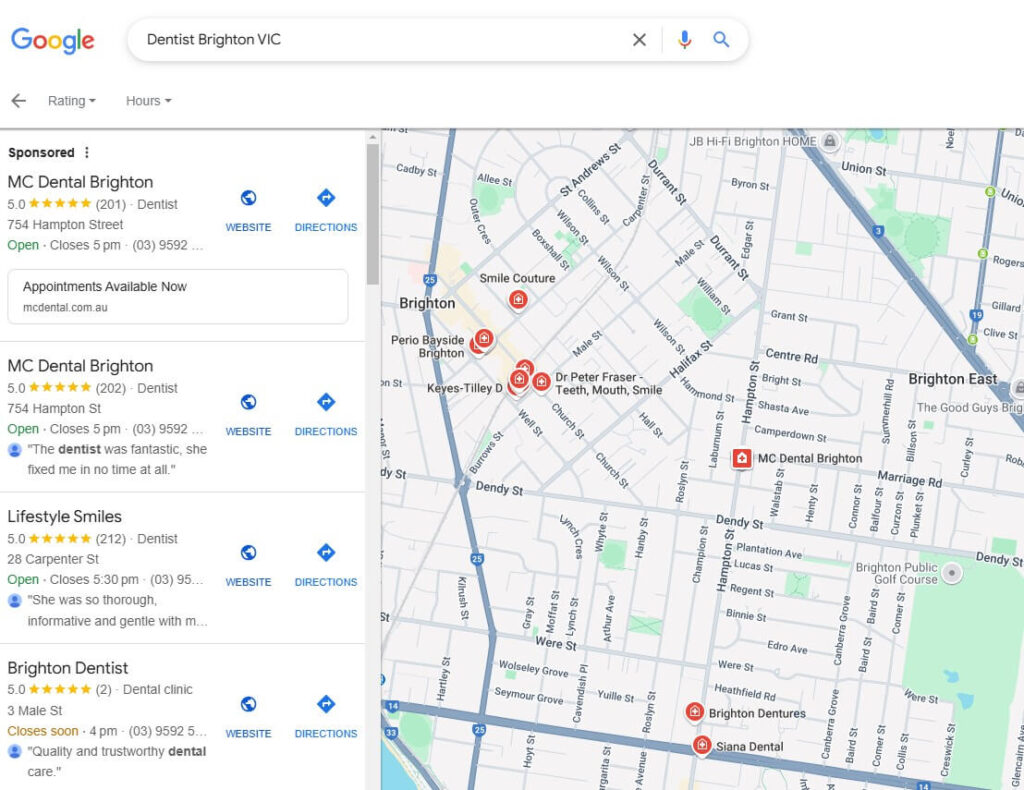
Learn more about Birdeye and the MC Dental Brighton case study
Worth Noting: Platforms like Birdeye empower healthcare brands to scale patient engagement, automate time-consuming tasks, and grow without compromising the quality of care.
Challenges and ethical concerns of AI in healthcare: What must be addressed
The rise of AI in Australian healthcare shows that its benefits come with equal responsibility. Rapid adoption must be balanced with robust ethical, regulatory, and professional safeguards to ensure patient safety and trust.
Therefore, to ensure AI strengthens rather than destabilises the health system, providers, policymakers, and researchers must address the following key challenges:
- Data privacy and security: AI relies on large volumes of sensitive medical data for training and monitoring, but this information must be encrypted, securely stored, and handled in full compliance with Australia’s Privacy Act. The stakes are high; a single breach could damage public trust and compromise the safety of millions of patients.
- Transparency and explainability: AI, particularly advanced technologies like deep learning, can behave like a black box. Patients and clinicians must understand how decisions are made. Without clear explanations in plain language, even the most accurate AI will face skepticism and lower adoption.
- Informed consent: Every patient has the right to know when AI is part of their treatment, whether it’s for early cancer screening, triage, or monitoring recovery. This is both an ethical obligation and a practical step toward improving acceptance.
- Bias in datasets: AI systems trained on incomplete or skewed datasets can produce unequal outcomes, such as misdiagnoses for underrepresented populations. Research is essential to ensure training data reflects diverse demographics and clinical scenarios, preventing bias from being developed into the system.
- Professional accountability: AI should function as an assistant, not a decision-maker. Human oversight remains critical for quality assurance and patient safety. Clinicians must remain the final authority on any diagnosis, treatment, or care decision.
Example:
Australia’s next era: healthcare AI.
Want to see the impact of Birdeye on your business? Watch the Free Demo Now.
A generative AI platform suggesting a treatment plan without clinician review could recommend an inappropriate intervention, posing serious health risks. This is why Australia’s national policy roadmap frames AI as a co-pilot, ensuring it supports, rather than replaces, human judgment.
Addressing these concerns will require collaboration between healthcare providers, regulators, education bodies, and technology developers. Strong governance, ongoing research, and a commitment to ethical best practices are the only way to realise the full benefits of AI while protecting patients and maintaining trust in the healthcare system.
How AI tools are regulated in Australia’s healthcare system
The use of AI tools in Australian healthcare is expanding rapidly, but with that growth comes heightened scrutiny. In Australia, a network of regulators, research bodies, and industry alliances collectively monitors the use of AI to ensure it performs effectively and fairly across different parts of the healthcare ecosystem.
Current oversight mechanisms shaping AI in healthcare:
- Therapeutic Goods Administration (TGA): Regulates AI-based medical devices to ensure they meet safety, performance, and quality care standards before entering clinical use.
- Australian Health Practitioner Regulation Agency (AHPRA): Ensures healthcare professionals uphold ethical practices when using AI, keeping patients at the centre of care.
- Australian Alliance for Artificial Intelligence in Healthcare (AAAiH): A leading research and policy body that issues guidelines, safety protocols, and best practices for ethical AI adoption.
- Australian Digital Health Agency: Drives the integration of AI-powered tools into the My Health Record ecosystem, improving data accessibility for better health decision-making.
Australia’s national policy roadmap underscores that while AI can perform tasks faster and more accurately than humans, it must operate under strict governance to prevent misuse and bias. The goal is to enable benefits without compromising patient safety.
Quick Tip: When adopting AI in healthcare, choose tools that comply with TGA and AHPRA requirements, especially if they influence diagnosis or treatment decisions. Compliance isn’t just a legal necessity; it’s a commitment to safe, ethical, and high-quality patient care.
How healthcare providers can meet their professional obligations
Every step of healthcare AI adoption must align with professional duties around quality care, safety, and ethical considerations, ensuring that these advanced technologies strengthen patient trust, improve services, and support better health outcomes.
This is also echoed by the Australian Alliance for Artificial Intelligence in Healthcare, which promotes ethics-driven adoption and continuous further research into the risks and challenges of emerging tools.
Key professional responsibilities for healthcare providers using AI:
- Accountability: Clinicians retain full responsibility for final decisions in medicine; AI should assist, not replace, clinical judgment.
- Understanding: Professionals must fully understand how the AI tool works, its data sources, and its limitations.
- Transparency: Clearly explain to patients the role of AI in their care, using plain language that promotes trust.
- Informed consent: Ensure patients are aware of, and agree to, the use of AI in their diagnosis or treatment.
- Risk mitigation: Identify and address known biases or limitations in AI models before they impact services or patient outcomes.
- Ongoing education: Stay updated through university programs, industry training, and professional development on AI advancements and ethical considerations.
- Bias and fairness checks: Regularly audit AI outputs to ensure quality, fairness, and alignment with ethics.
- Data security compliance: Protect patient data through secure storage, encryption, and compliance with Australian privacy laws.
- Collaboration and review: Engage in peer reviews and share findings with professional bodies to support safe AI adoption.
Example: A predictive analytics tool can identify high-risk patients for early intervention, improving engagement and outcomes. However, clinicians must review the analysis, verify its accuracy, and ensure the recommendations meet clinical standards before taking action.
Pro Tip: Birdeye Insights AI helps providers track patient sentiment and performance trends across reviews and chat, enabling data-driven improvements, real-time course corrections, and stronger connections with patients.
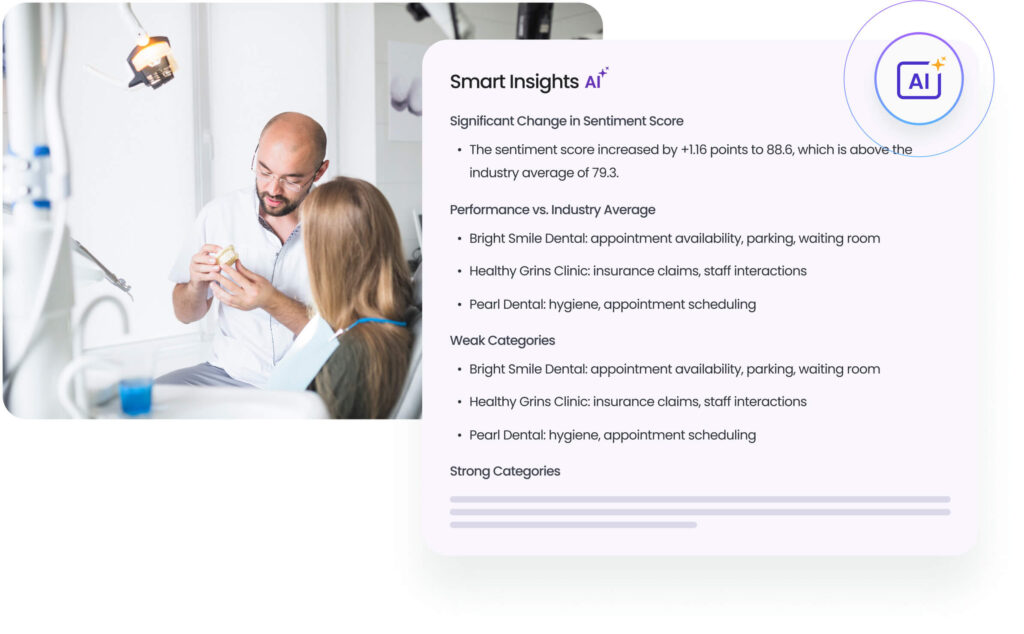
What the future holds for AI-enabled healthcare in Australia
Australia’s health system is at a turning point where artificial intelligence (AI) is reshaping care delivery and management. In clinical practice, AI now supports quality care, expands access, and streamlines resources.
From generative AI in mental health to automation that accelerates routine tasks, the use of AI is shifting from pilots to daily healthcare operations.
Key areas where artificial intelligence AI is making an impact include:
- Expanding access in rural and underserved regions, ensuring patients in remote communities receive timely support.
- Aged care innovations that reduce fall risks, manage medication schedules, and improve overall safety for older Australians.
- Generative AI tools are assisting in mental health and behavioural therapy by providing 24/7 conversational support and tailored care resources.
- AI education for clinicians through accredited AI in healthcare courses in Australia, helping practitioners integrate new technologies effectively into their workflow.
- Workforce support for overstretched practitioners, freeing them to focus on more complex patient needs while AI manages routine processes.
Worth Noting: According to the Birdeye State of Online Reviews 2025, 48% of healthcare review responses are now automated, a clear sign of how AI is already streamlining communication while allowing providers to maintain patient trust and responsiveness.
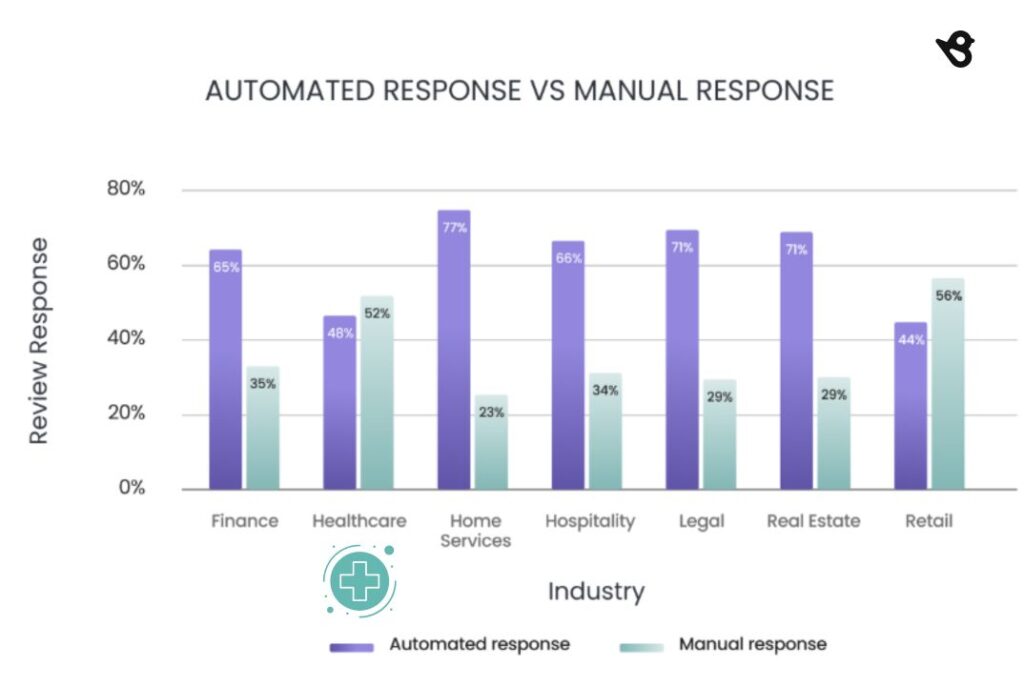
Quick Tip: If you’re a healthcare leader, begin with small-scale pilots in non-clinical areas such as admin and communication. Tools like Birdeye Chatbot AI can automate patient enquiries and follow-ups, proving value before you scale into more advanced clinical practice applications.
Moreover, BirdAI uses industry-specific knowledge to keep AI solutions compliant and relevant to healthcare. It ensures the AI speaks the healthcare industry’s language for better accuracy. BirdAI also benchmarks performance to deliver the best results in the market.
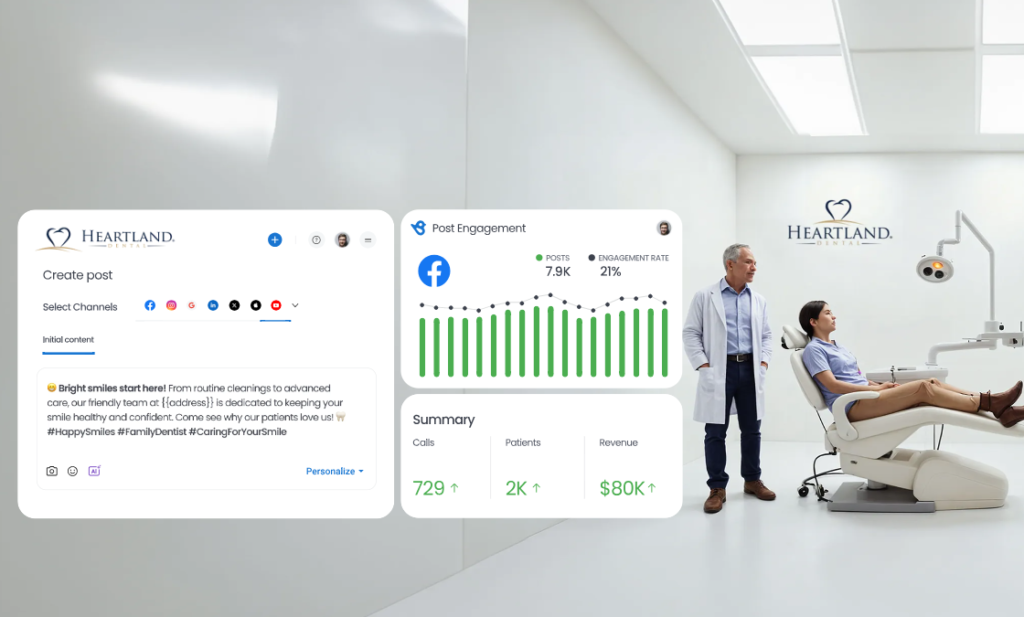
This balanced approach, rooted in research, ethics, and practical testing, ensures that artificial intelligence strengthens the delivery of quality care without compromising the human connection at the heart of health services.
FAQs: AI in healthcare Australia
AI improves healthcare delivery by enhancing diagnosis accuracy, automating admin tasks, and enabling personalized treatment. It also strengthens communication through tools like Birdeye Messaging AI.
Key issues include data privacy, lack of transparency, potential bias, and the need for patient consent. Tools must align with national frameworks and be used under human oversight.
Generative AI supports communication, triaging, and content creation. It can assist with documentation, chat support, and clinical suggestions when properly supervised.
Yes, multiple universities and medical colleges now offer certified AI in healthcare courses in Australia, focused on ethics, implementation, and safety.
Hospitals, aged care, dental clinics, radiology, mental health, and general practice are actively deploying AI applications to improve patient outcomes and operational efficiency.
Final thoughts: Moving from potential to practice
AI in healthcare in Australia represents more than just automation. It’s a powerful shift in how care is delivered, monitored, and experienced. The challenge is ensuring it supports quality care, promotes ethical considerations, and doesn’t compromise patient safety.
Whether you’re a dental clinic looking to grow like MC Dental, a hospital aiming for faster diagnosis, or a clinic needing secure patient communication, the AI roadmap is already here.
With GenAI solutions like Birdeye Chatbot AI, Birdeye Reviews AI, and Birdeye Listings AI, your healthcare practice can thrive in this rapidly expanding digital era without compromising human connection.
The future of AI-enabled healthcare in Australia isn’t years away. It’s already in your waiting room.

Originally published
